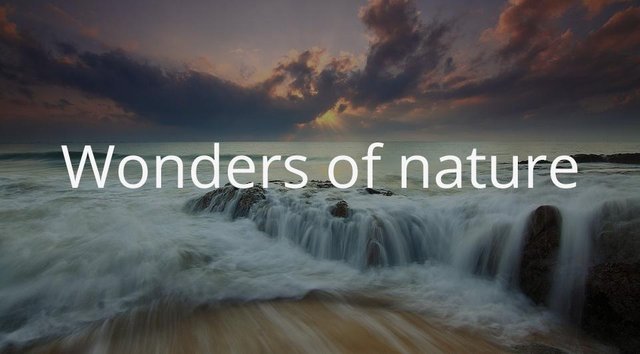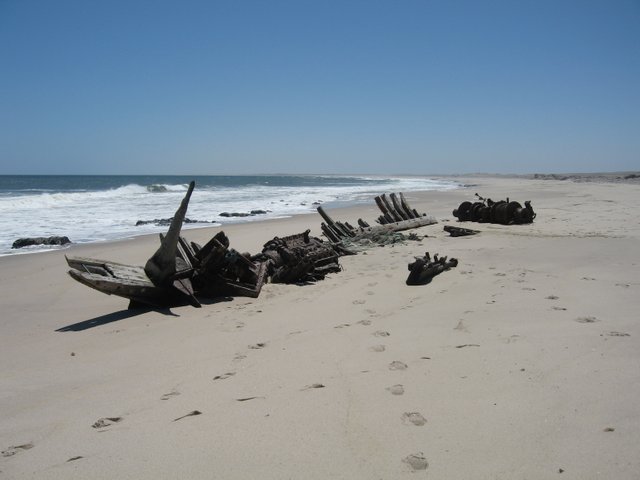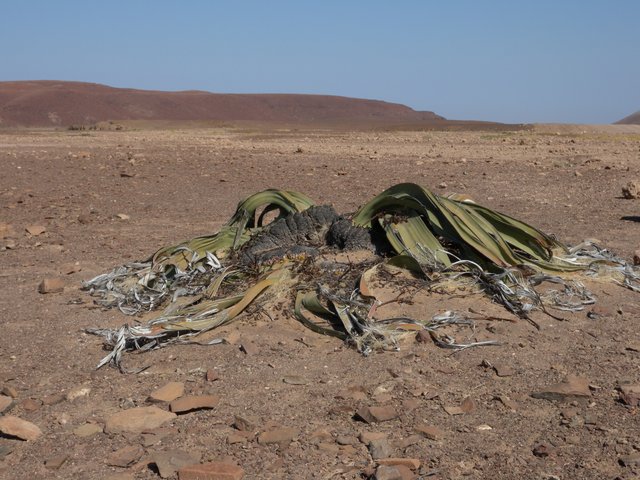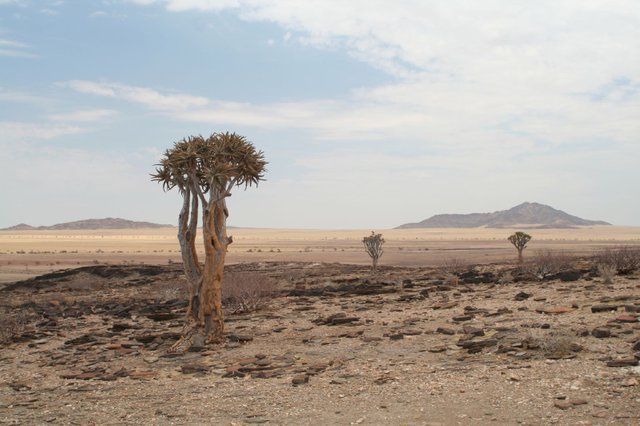Wonders of nature. Skeleton Coast

The wreckage of wrecked ships dot one of the most dangerous and desolate shores in the world.
The pristine white sands stretch between the ancient desert of Namib and the waters of the Atlantic Ocean. This coast of Namibia was called by the coast of hell by Portuguese sailors.
The 500-kilometer shore, sunburned for all its lifelessness, is extraordinarily beautiful. When the Swedish explorer and naturalist Charles John Anderson visited this bank in 1859, he felt "trembling and even fear". "I would rather prefer to die", he exclaimed, "than to be doomed to live in such a place".
If you look from the air, Skeleton Coast seems to be strewn with millions of golden sand dunes that stretch to the northwest from the Atlantic to stony plains in the interior of the continent. Restless dunes hum and roar in an unusual symphony, which is conducted by the wind.
Along the entire Skeleton Coast, treacherous undercurrents, a storm wind, creeping fog and reefs, whose serrated fingers stretch far into the sea, collect a spooky crop of broken ships. There are countless stories about those who reached the shore after the shipwreck, happy that he was alive, only to fall victim to a slow death under a ruthless sun.
Twelve decapitated skeletons lying side by side on the sand, and the skeleton of a child in an empty hut nearby were discovered on this shore in 1943. Near it was a burnt-out sign with the inscription: "I go to the river 60 miles to the north, and if someone finds this inscription and follows me, God help him". This message was written in 1860. It is still not clear who were the victims of the tragedy, how they were shipwrecked and why all the skeletons are beheaded.
The skeletons' beach got its name when, during the flight from Cape Town to London in 1933, a Swiss pilot Carl Nauer crashed in the area. One of the journalists suggested that his bones can be found on the Skeleton Coast. However, Nauryer's remains were never found, but the name was fixed.

The wind blew
Behind the shore dunes, out of a flat desert, unusual rock formations erupt like ghosts, riddled with numerous holes and voids. Such a fantastic outline they gave the wind for 700 million years. Some look like gigantic, skewered mushrooms. Others, for example the Skull rock in the lower reaches of the Munutum River, resemble a skeleton, and empty eye sockets look afar onto the sandy plains.
In the south, from the mainland ridges, streams sometimes flow down, which almost always dry out, never reaching the ocean. These dry channels remind of the abandoned railroad tracks that go through the desert, only visible until they are swallowed up by the sands. Other rivers, for example, Hoarosib, flowing in canyons with steep clay walls, sometimes make their way to the sea, when downpours deep in the mainland for a short time turn them into an avalanche of chocolate brown water.
Scientists call the bed of dried up rivers an elongated oasis, because their underground waters give life to a huge number of plants and animals. Here, from the Namib desert, herbivorous animals come to drink on the green grass and in the bushes. Elephants in search of water dig tusks of a hole in the sand. For the sake of miserable drops of water, the lasers will crash the ground with hoofs.
On the shore, where there are deserts and the sea, waves bring small pebbles. Piles of pebbles from granite, basalt, agate, cornelian and quartz are piled on the beach in violation of all geology laws.
Southern winds blow from the sea. And for all — sailors who were the victims of shipwrecks who were roasted alive in the sun, doomed adventurers lost in blinding sandstorms — these winds sang their funeral song.

Bushman hunters living in the Namib desert named these winds — one of the most unusual phenomena of nature — "su-up-va" to convey their sound. When they blow, the dunes begin to crumble, and between the falling quartz particles there is such friction that the dunes literally roar.
At night, when the wind subsides and the desert cools, nature looks at this tormented earth with compassion and sends a fog crawling deep into the continent. The fog seems to envelop the shores and rocks, bringing relief to the sun-burned plants and animals.
Nowhere is this more apparent than on the stony plains beyond the dunes. During the day, every hot stone covered with lichen seems dry and lifeless. Fogged by a night mist, the lichen comes back to life and blossoms with a sea of colors. When night falls and the fog creeps onto the dunes, tiny creatures crawl out of the sand of the Skeleton Beach to remove from the fog that single moisture that is available to them here.
With the onset of a new day, the wonders of the desert continue. Zlatokrot Grant, slightly larger than a man's finger and completely blind, dives deep into the sand, hunting for crickets, beetles or geckos, fleeing in the sand from the sun. Coriander beetles move on their long, stilted legs, trying to lift the body as high as possible over the hot earth and substitute it for a cool wind.
Beetles white omnimacris with their light back reflect the sun's rays, in order to somehow weaken the heating of their body. This allows them to run around the hot sand long after their relatives with black backs are forced to dig into it.
After a while, the desiccating east wind rises, carrying the living and dead organic matter from the depths of the continent, which some inhabitants of the desert are eager to use. Unexpectedly, the sun heated sand revives, lizards appear, as well as beetles and other insects, rapidly snapping up the brought "snacks".
The Dancing Lizard
When the temperature of the body reaches dangerous limits, the inhabitants of the desert dive back into the sand, bending all over the body in rapid movement. Remains on the surface only a quick lizard that fights the heat by performing a strange dance, lifting two feet to cool them. The lizard, like an example of a ballet, lifts the body above the sand, curving and motionlessly holding the tail and the front and back legs of the opposite sides in the air.
Unlike sand, the sea here is quite cold because of the Bengal Current, which is heading north from Antarctica. Cold waters are teeming with sardines, sardines, anchovies and mullet. They are hunted by sea birds and hundreds of South African fur seals that breed on the islands and in the bays of the deserted Skeleton Coast.

Beautiful
Congratulations! This post has been upvoted from the communal account, @minnowsupport, by Mamasetta from the Minnow Support Project. It's a witness project run by aggroed, ausbitbank, teamsteem, theprophet0, someguy123, neoxian, followbtcnews/crimsonclad, and netuoso. The goal is to help Steemit grow by supporting Minnows and creating a social network. Please find us in the Peace, Abundance, and Liberty Network (PALnet) Discord Channel. It's a completely public and open space to all members of the Steemit community who voluntarily choose to be there.
If you would like to delegate to the Minnow Support Project you can do so by clicking on the following links: 50SP, 100SP, 250SP, 500SP, 1000SP, 5000SP. Be sure to leave at least 50SP undelegated on your account.
This post has received a 0.02 % upvote from @drotto thanks to: @mamasetta.
Подписка и моя поддержка. 👌
Resteemed your article. This article was resteemed because you are part of the New Steemians project. You can learn more about it here: https://steemit.com/introduceyourself/@gaman/new-steemians-project-launch
Привет !! Буду рад твоей поддержке! Тем более мы знакомы! Голос фест
Congratulations @mamasetta! You received a personal award!
You can view your badges on your Steem Board and compare to others on the Steem Ranking
Do not miss the last post from @steemitboard:
Vote for @Steemitboard as a witness to get one more award and increased upvotes!